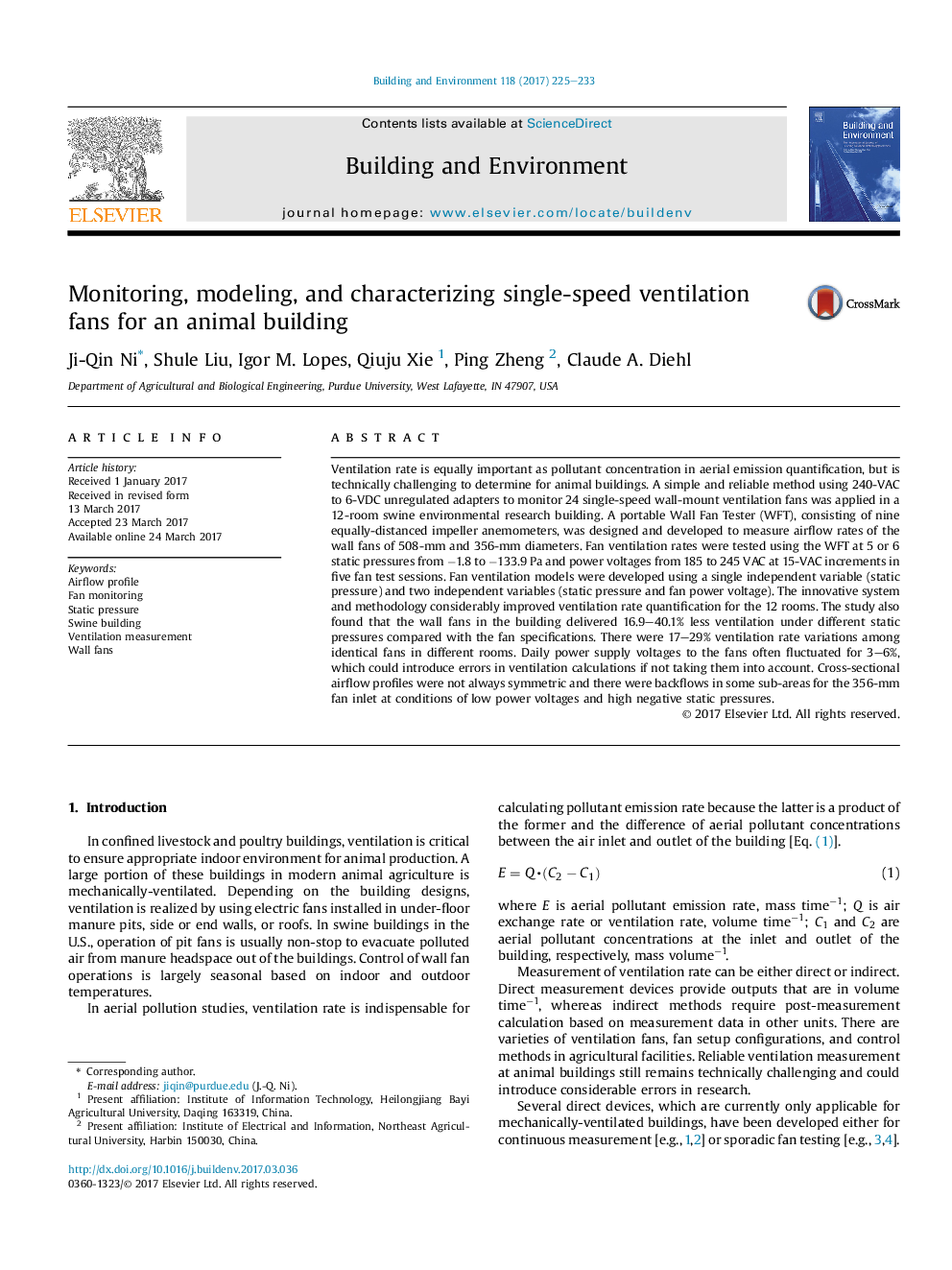| Article ID | Journal | Published Year | Pages | File Type |
|---|---|---|---|---|
| 6479272 | Building and Environment | 2017 | 9 Pages |
•A new method was developed for reliably monitoring pig building fan status.•A new portable device was designed for on-site wall fan ventilation measurement.•Fan models with single and two independent variables were developed.•Fans delivered 16.9–40.1% less ventilation in pig building than fan specifications.•Fan power voltage monitoring is recommended for fan ventilation calculation.
Ventilation rate is equally important as pollutant concentration in aerial emission quantification, but is technically challenging to determine for animal buildings. A simple and reliable method using 240-VAC to 6-VDC unregulated adapters to monitor 24 single-speed wall-mount ventilation fans was applied in a 12-room swine environmental research building. A portable Wall Fan Tester (WFT), consisting of nine equally-distanced impeller anemometers, was designed and developed to measure airflow rates of the wall fans of 508-mm and 356-mm diameters. Fan ventilation rates were tested using the WFT at 5 or 6 static pressures from −1.8 to −133.9 Pa and power voltages from 185 to 245 VAC at 15-VAC increments in five fan test sessions. Fan ventilation models were developed using a single independent variable (static pressure) and two independent variables (static pressure and fan power voltage). The innovative system and methodology considerably improved ventilation rate quantification for the 12 rooms. The study also found that the wall fans in the building delivered 16.9–40.1% less ventilation under different static pressures compared with the fan specifications. There were 17–29% ventilation rate variations among identical fans in different rooms. Daily power supply voltages to the fans often fluctuated for 3–6%, which could introduce errors in ventilation calculations if not taking them into account. Cross-sectional airflow profiles were not always symmetric and there were backflows in some sub-areas for the 356-mm fan inlet at conditions of low power voltages and high negative static pressures.
